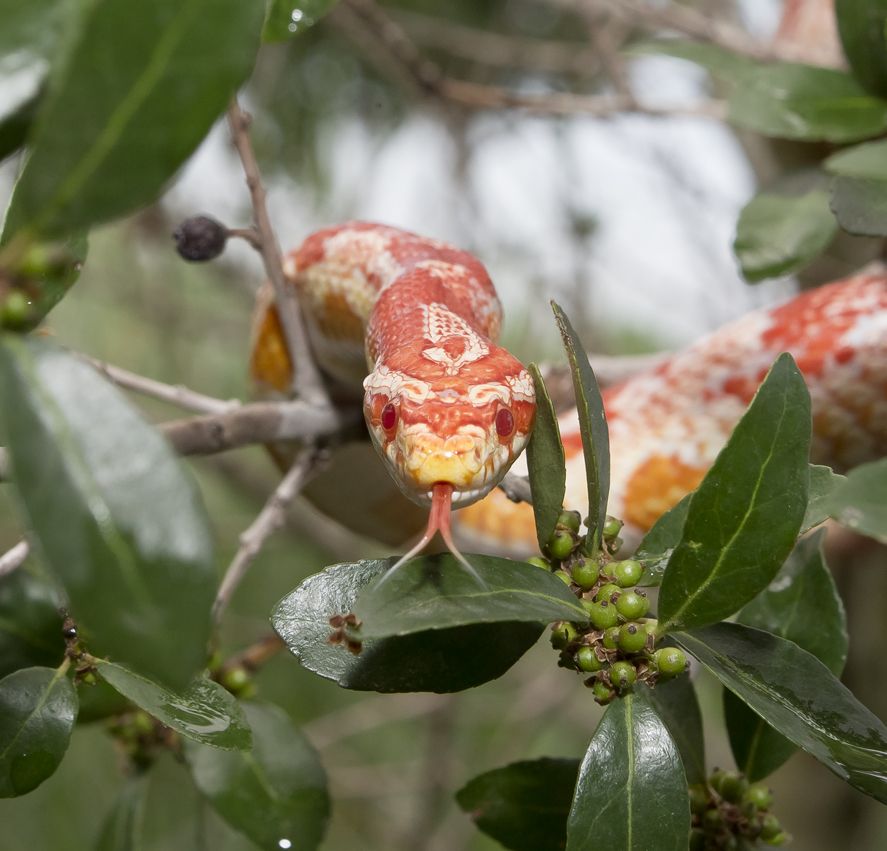Snakes' Scales Propel Them Up Tree Trunks

Without legs, snakes must get creative to slither up trees, and new research suggests they use the scales covering their bodies to make such climbs.
Their scales and body muscles work together to push against the bark on the tree as they inch upward, the researchers said.
"An important and surprising finding of our study was that snakes can double their friction coefficients … by active control of their scales," the researchers write in their research paper, published in the June 13 issue of the journal Royal Society Interface.
They discovered the scale-y skill by watching corn snakes climb channels inclined at up to 60 degrees from horizontal. [More images of snakes climbing trees]
Holding on tight
Friction is the glue that holds the world together. For example: Imagine the difference between a regular slide and a water slide. The slide slick with water has much less friction than a dry slide, so you move faster down the water slide. Also, a small child slides quicker and easier than a 200-pound man, because the weight pushing against the surface increases the friction.
"A snake propels itself in a channel using a series of extensions and contractions, in which a portion of its body extends forward while the remainder anchors," the researchers write. "We found anchorage relies on two mechanisms to augment friction: (i) transverse pushing against channel walls and (ii) the control of belly scales to grip the bottom of the channel."
Sign up for the Live Science daily newsletter now
Get the world’s most fascinating discoveries delivered straight to your inbox.
In the lab, the researchers saw that the snakes used their body muscles to push on the bark-covered walls with nine times their body weight. They were also able to execute an "emergency" brake procedure by forming a wave shape and pushing small areas of the belly into the surface with more force than other parts of the belly.
These forces are easier to create in narrow channels (which would be the equivalent of narrower furrows in a tree's bark), the researchers found. The wider the channel, the more difficulty the snakes had in pushing nine times their weight into the walls.
Catching tree bark
The snakes were also able to angle their scales outward to make them better at catching and digging in to the bark's rough surface. This scale angling created twice as much friction against the bark (compared with the scales remaining flat), pushing the snakes up and letting the snakes sit in trees for an extended amount of time.
This required roughness is important to help the snake's scales grip onto the tree, and it could be why they prefer one side of a channel over another.
"The source of this irregularity is unclear," the researchers said about the snake's side preferences. "We speculate that small changes in channel width or roughness may cause the snake to choose one side of the channel over another."
The researchers hope to use these insights to design a slithering search-and-rescue robot, which could be used in complex terrain like navigating through rubble.
Follow Jennifer Welsh on Twitter @microbelover or LiveScience @livescience. We're also on Facebook & Google+.
Jennifer Welsh is a Connecticut-based science writer and editor and a regular contributor to Live Science. She also has several years of bench work in cancer research and anti-viral drug discovery under her belt. She has previously written for Science News, VerywellHealth, The Scientist, Discover Magazine, WIRED Science, and Business Insider.













